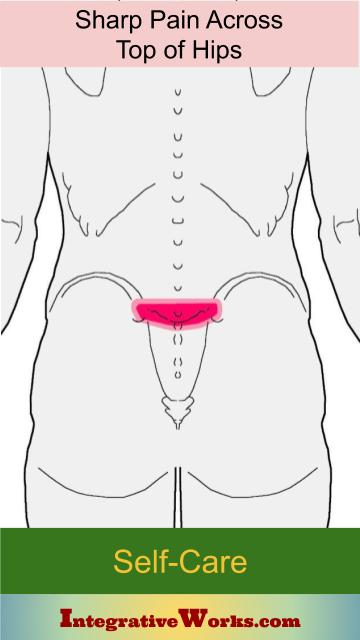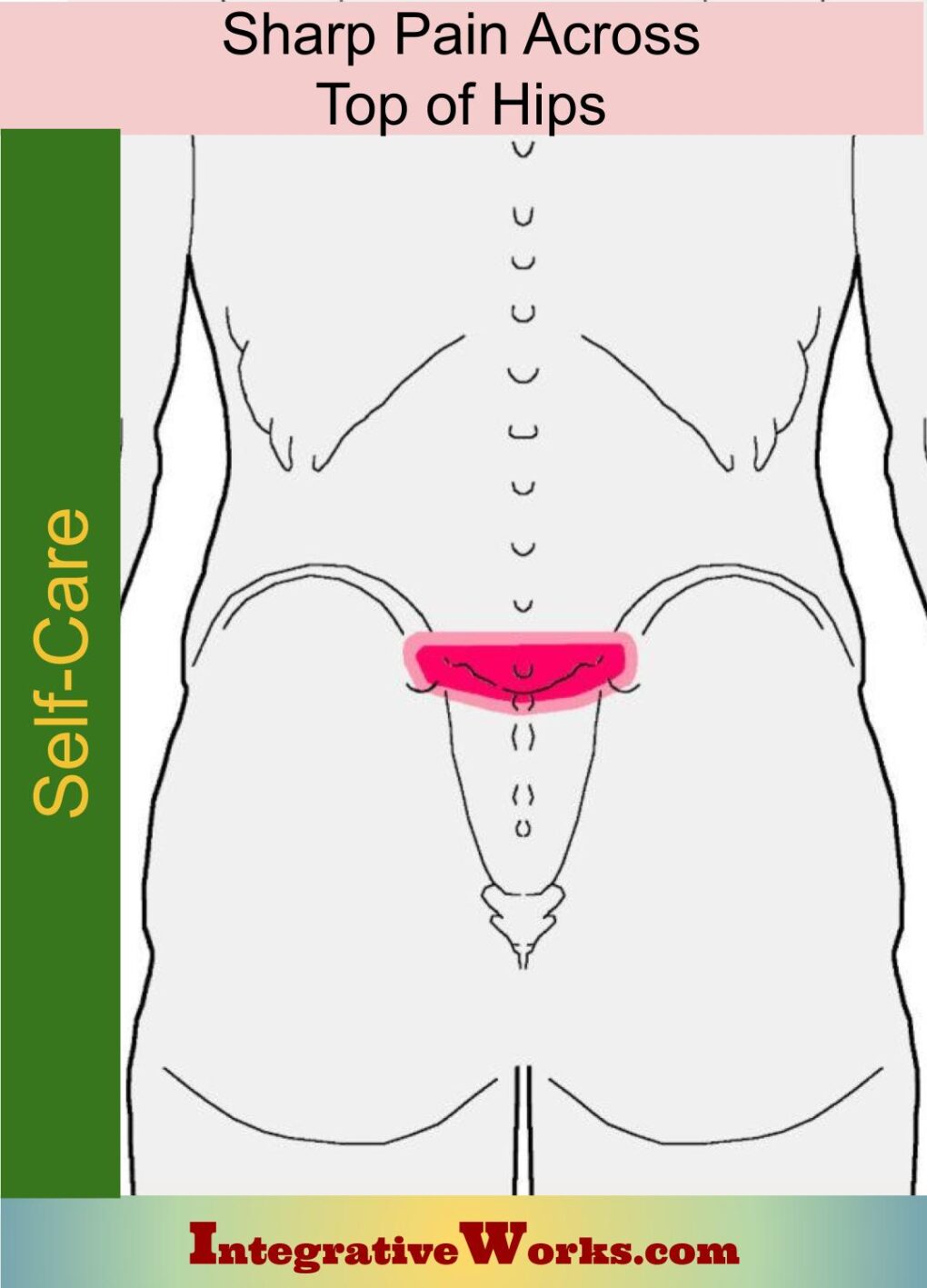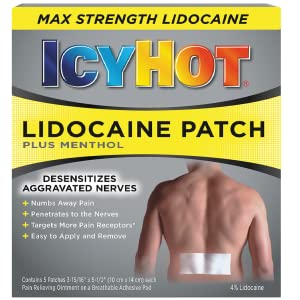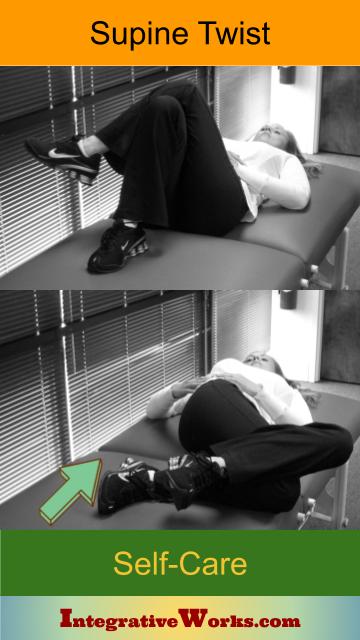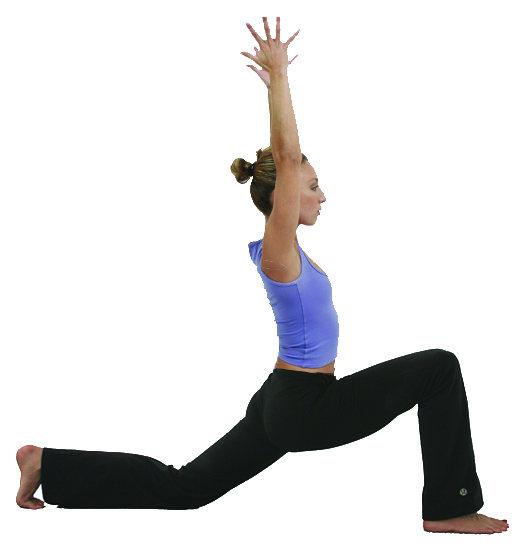Table of Contents
- Activities to Avoid or Change
- For Temporary Relief
- Stretches and Exercises for Longer-Lasting Relief
- Yoga Corner
Here, you will find self-care for relief from sharp pain across the top of your hips. I probably give this post to more clients than any other to help with low back pain. If you’d like to read more about how people describe the pattern, see an example and review activities that aggravate it take a look at this other post.
This pain pattern indicates disc compression at the lumbosacral joint.
If this pain is chronic or debilitating, seek professional help.
Activities To Avoid or Change:

Break Bad Postural Habits
Like this other pain pattern, spending lots of time with your hips flexed will make this worse. This includes sleeping in a fetal position, sitting for long periods, driving, etc.
High-Impact Can Really Hurt You
Avoid activities that have an impact on your low back; basketball, jet-ski, trail running, etc. This is an indicator that the lumbar disc is compressed and you may make this problem worse.
For Temporary Relief:
Topical patches like these offer some relief and will improve your energy levels. So, put them right where shows in the picture on the box. Feel for your ribs and hips in the back. Center this patch in that area. These patches and others like them are available here on Amazon.
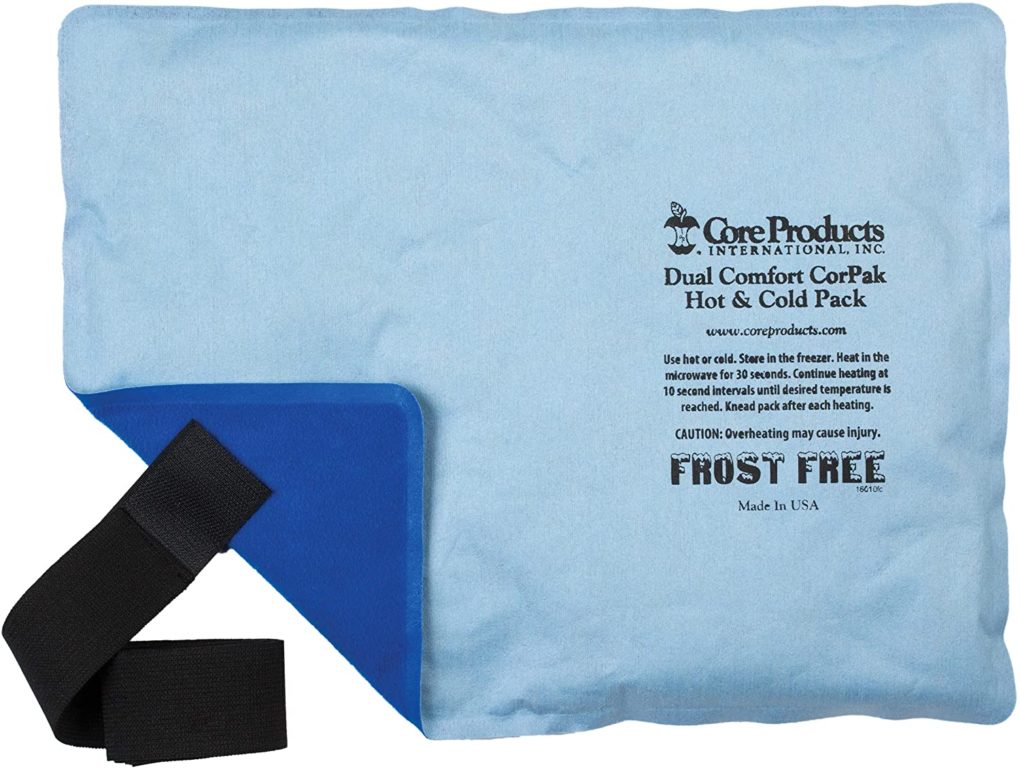
Icing helps to relieve pain and reduce swelling. Put it right on the painful spot. If it is a larger ice-pack, like this one, cover the low-back as well.
I like these 10×13 ice packs to focus the icing on the right area. They have a cloth covering to prevent frostbite. That’s handy when you’re in too much pain to find and position a thin cloth. Here is a post with guidelines on using an ice pack. Also, these ice packs are available here on Amazon.
These self-care activities, like over-the-counter drugs, are not intended to replace appropriate medical attention. If you have concerns about these self-care activities, get help from a professional. Use these suggestions and strategies with discretion and at your own risk. See your doctor when your pain is severe, persistent, or not responding to these simple suggestions.
Stretches and Exercises for Longer-Lasting Relief:
Loosen Stiff Joints
Start with these supine twists. They mobilize the lower back and hip without compressing the lumbosacral joint.
Very Gentle Stretch
In yoga, Spinx is a good start. Physical therapists suggested a version of this for many years before yoga had its surge in popularity.
The Spinx pose is gentle, gives you lots of control, and is easy to do. Pulling in your abdomen and taking your shoulders back to open your abdomen adds a bit extra to the stretch.
A Little Stronger Stretch
This Upward-Dog position is a good next step. She does a great job of lifting up with moderate bending and without pressing the hips into the mat. Conversely, pressing hips into the mat may create pressure on the discs and sharp pain in the low back.
I’d love your feedback on how this works for you and any suggestions you might have.
Email me at integrativeworks@gmail.com.
Yoga Corner
The stretches above are the place to start. Once you can get your abdomen open, these poses can help build strength and stability.
Stretch AND Build Muscle
Bridges are a reliable step in the progression of strengthening your core. First, they help build the opposing muscles in the low back and hamstrings. Secondly, they flatten and lengthen the abs that oppose the iliopsoas. Thirdly, they stretch the rectus femoris which can also keep the hips flexed. Ease into them and avoid pushing into the sharp pain at the base of the back.
Start out lifting just until you get tension. Pull your belly button in as you reach the top. Hold each repetition for about 2 seconds and drop all the way back down. Do 10-20 twice a day or more. This exercise will build the opposing muscles. Gently repeat this bridging exercise daily until your hips arch above level.
These will be easier if you do 10 reps of the supine twist on each side before your bridges.
For the Active Body
If you have good lateral stability, lunges can be a good choice. They offer a lot of control from side to side. They also build erectors and lengthen the rectus femoris.
Warm up with supine twists, bridges and upward dog.
This high lunge is particularly good for psoas problems. Look at how she lengthens the front wall of the abdomen. At the same time, she drops the hips to extend the back leg. That position provides a great stretch on the psoas major.
Support Integrative Works to
stay independent
and produce great content.
You can subscribe to our community on Patreon. You will get links to free content and access to exclusive content not seen on this site. In addition, we will be posting anatomy illustrations, treatment notes, and sections from our manuals not found on this site. Thank you so much for being so supportive.
Cranio Cradle Cup
This mug has classic, colorful illustrations of the craniosacral system and vault hold #3. It makes a great gift and conversation piece.
Tony Preston has a practice in Atlanta, Georgia, where he sees clients. He has written materials and instructed classes since the mid-90s. This includes anatomy, trigger points, cranial, and neuromuscular.
Question? Comment? Typo?
integrativeworks@gmail.com
Follow us on Instagram

*This site is undergoing significant changes. We are reformatting and expanding the posts to make them easier to read. The result will also be more accessible and include more patterns with better self-care. Meanwhile, there may be formatting, content presentation, and readability inconsistencies. Until we get older posts updated, please excuse our mess.
